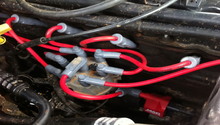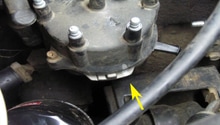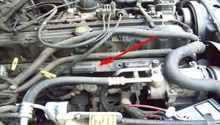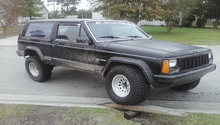Jeep Cherokee 1997-2001: How to Replace Spark Plugs
Having a good set of spark plugs can keep your engine healthy and prevent misfires. This article will show you how to change your spark plugs.
This article applies to the Jeep Cherokee XJ (1997-2001).
If you know anything about engines, you'll know that they operate through a series of controlled explosions that launches everything into motion. The spark plug, as you would guess, creates the spark to ignite those explosions. Over time, the material on the spark plug will wear down until it no longer creates a spark. This is why it's recommended you change the spark plugs every 40,000 miles or so.

Materials Needed
- 6 replacement spark plugs
- Ratchet with 13mm socket, 5/8 inch spark plug socket, and extension
- Spark plug gap gauge set to .035 inches
- Spark plug boot puller or needle nose pliers
- Anti-seize
- Dielectric grease
Step 1 – Open the hood and disconnect the battery
Pull the hood release on the lower-left of the driver's side, and then release the catch on the front of the hood. Prop up the hood, and then disconnect the negative (black) lead on the battery.

Step 2 – Remove the coil rail and spark plugs
There are four 13mm bolts that hold the coil rail to the engine. Remove all four bolts, pull the coil rail away from the engine and disconnect the electrical connector. Switch to your 5/8 inch socket and extension to unscrew the spark plugs; then remove them from the engine. The spark plug on the first cylinder is difficult to access, so try to get the angle right with your extension before removing it.
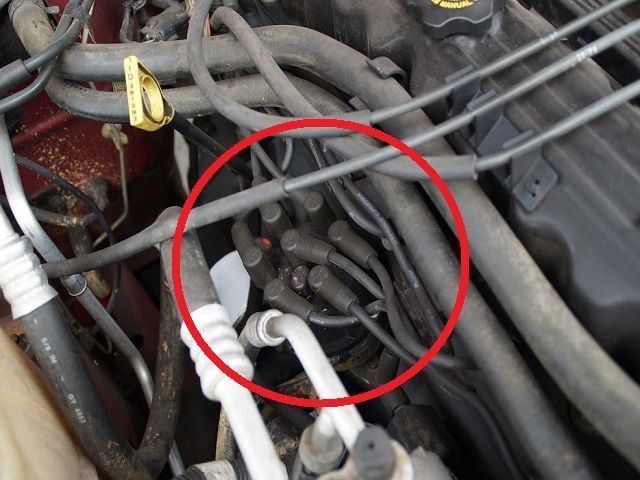
Figure 2. Pre-'00 XJ with plug wires. 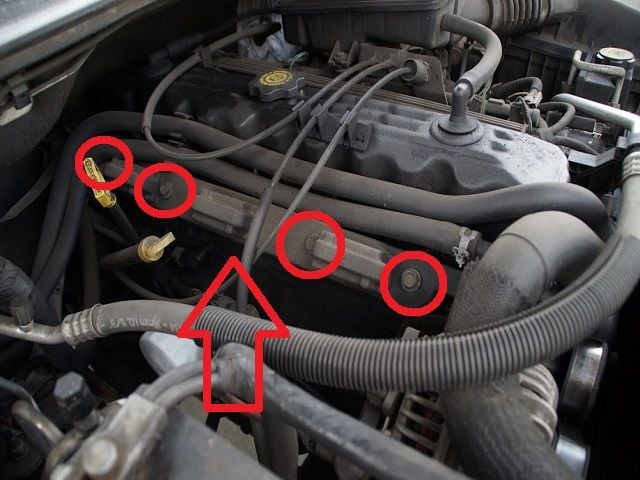
Figure 3. '00+ XJ with coil pack. 
Figure 4. Wires/coil pack removed.
Pro Tip
Pre-2000 model Cherokees have spark plug wires instead of a coil rail. You'll need to remove the boot covers on the spark plugs before you can remove the spark plugs themselves. Be careful not to mix up the boot wires, as they connect to a distributor with specific wiring for each cylinder.
Step 3 – Install new spark plugs
Even new spark plugs need to be checked. Use your spark plug gap gauge to ensure that the gaps in your new spark plugs come to .035 inches. To adjust the spark plug, carefully push and pull on the tip of the electrode until it comes to the right gap size.
Before you install your spark plugs, apply a dab of anti-seize to the threads. This will make it easier to remove later on. Then apply a little dielectric grease to the end that connects to the wires. This will ensure that a solid electrical connection is made.
Now you're ready to install. When you install your new spark plugs, thread them into the engine by hand to ensure they're on straight. Don't over-tighten them and don't cross-thread them because if they get stuck in the engine, it could lead to a very expensive repair job. Torque spec is 12 ft./lb. if you have a torque wrench; if not, just go until "snug." You do not need to apply much torque to the plugs, at all.
After installing the spark plugs, all you need to do is reattach as well as tighten the wires or the coil rail and then reconnect the battery. Start the engine and listen to how it fires. Hopefully it's an improvement over what it was before.
Featured Video: How to Replace Spark Plugs
Related Discussions
- Spark Plugs - CherokeeForum.com
- Spark Plug Recommendations - CherokeeForum.com
- Spark Plug Write-up - CherokeeForum.com
- Spark Plugs - CherokeeForum.com

